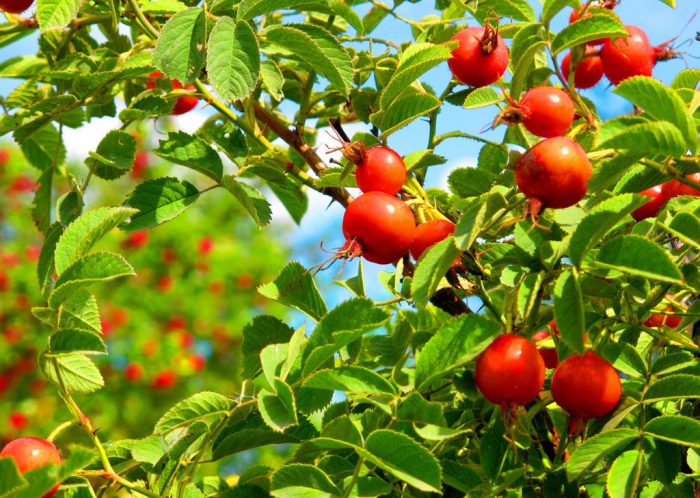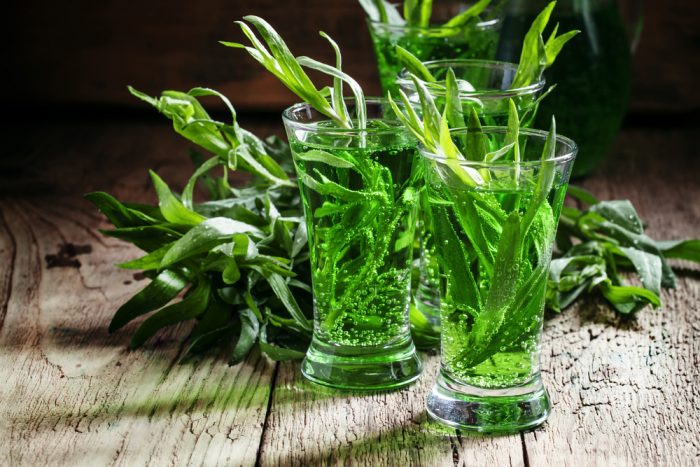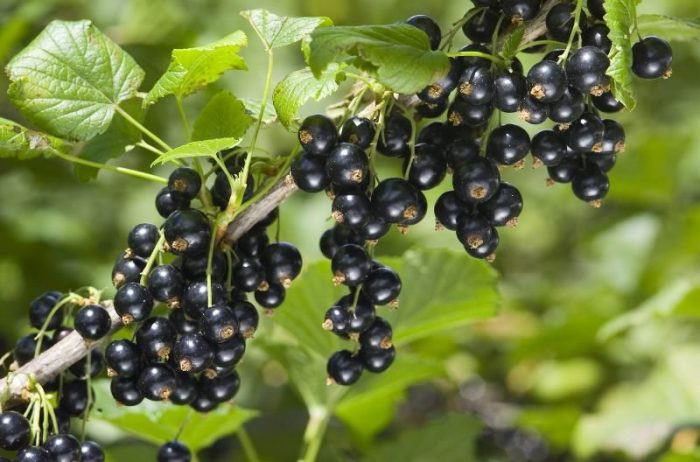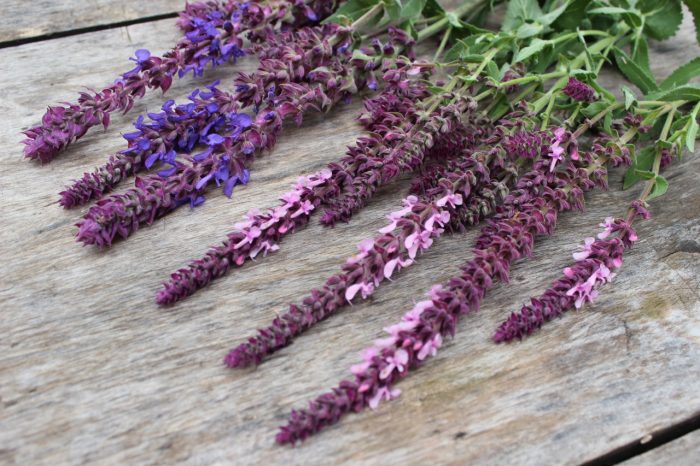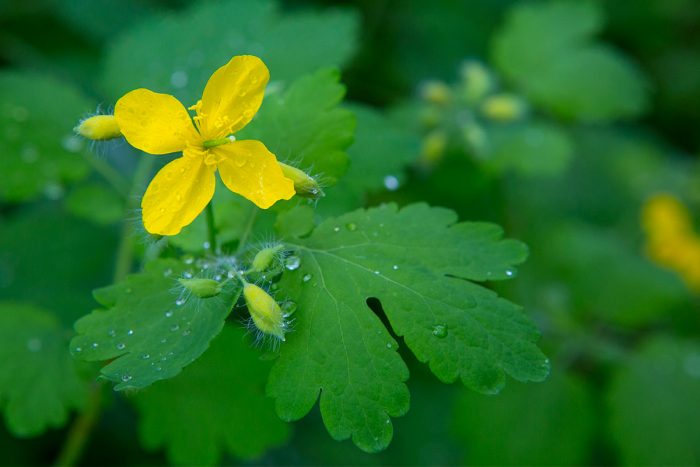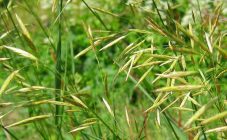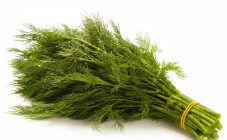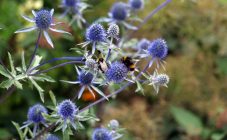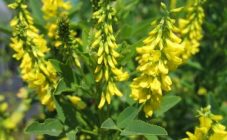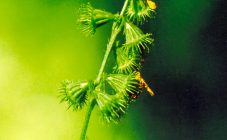Content:
Human society, long before the development of agriculture, was actively engaged in gathering. The collected plants and their elements were widely used not only in cooking: they were used to make tools, protection, fabrics for making clothes. Some types of harvested and grown have been used in the treatment of certain diseases in humans and animals. Some of the plants served as protection in fields and gardens, scaring away harmful insects and even rodents with their smell. Information about the beneficial properties of the flora representatives was collected bit by bit, passed orally from generation to generation, they were actively changing the accumulated knowledge, first between tribes, and soon between peoples.
Common medicinal herbs
Of more than half a million plant species known to mankind, about 40 thousand of them have medicinal properties.
The most common representatives of the flora with medicinal properties are echinacea, rose hips, chamomile, mint, sage, wormwood, valerian, horseradish and others. All of them grow in Russia, some of them can be collected in orchards and vegetable gardens, the rest have to be looked for in forests, fields, swamps and mountain slopes.
- Rosehip, for example, is unique in that it is used both in the pharmaceutical industry and in traditional medicine. Its bright orange berries are rich in vitamins C, B, K, R. The presence of sugar, organic acids and tannins in the composition makes it an almost undeniable leader in terms of usefulness.
- The medicinal herb echinacea boasts antibacterial properties. She is also a good immune stimulant.
- Chamomile teas are known for their soothing properties.
- The horseradish root system is characterized not only by its culinary properties. Ascorbic acid, which is found both in the roots and in the leaves, makes the plant popular in medicine. Pharmacology sees in it an inexhaustible storehouse of essential oils, and the squeezed juice and water infusion of horseradish have vitamin, expectorant and diuretic effects.
- Valerian grows massively in meadows and forest edges. Known for its calming effect on neuroses. She is a good killer of some pathogenic microbes.
- Aloe can be found on most of the country's windowsills. This houseplant is not only for decorative purposes. The sap of the plant has a strong bactericidal effect and is used both externally and orally. Alcohol-based tinctures are used as a preventive measure against colds and as an immune-strengthening agent.
Types of medicinal herbs
What are herbs in herbal medicine:
- Nutritional purposes (garlic, cabbage, sorrel, oats, wheat germ, edible weeds) For normal body functioning, it is advisable to eat them daily, since each of these plants is a real storehouse of vitamins and minerals.
- Toning (ginseng, burdock, dandelion roots, tarragon).For more tangible benefits, some of them need to be taken for 4-5 weeks.
- Stimulating action (tea, coffee, cocoa, cinnamon). A temporary surge of strength from their use is guaranteed.
- Calming effect (valerian root, hops, wormwood). It is important to remember that the use of these herbs must be strictly dosed.
- Poisonous character (the same wormwood, belladonna, dope, hemlock, cow parsnip). In no case should you use them for today's fashionable "cleansing of the body", the outcome can be the most sad. But the usefulness of the properties of these plants is undeniable, because most of these herbs have bactericidal properties.
Green pharmacy of the Volga region and Kuzbass
Nature has made sure that medicinal plants are fully available in every part of the world. And if eucalyptus, for example, does not grow in Russia, this is not a problem. You can always find a local analogue, or even several with similar properties. Therefore, in the medicinal herbs of the Volga region and Kuzbass, there is a whole range of medicinal properties. Some of the plants can be found in orchards and vegetable gardens (rose hips, currants, mountain ash, etc.), the rest grow in forests, fields, swamps and the banks of rivers and lakes. The name of medicinal herbs has ancient folk roots.
All this flora with useful properties can be divided into several types:
Official medicinal plants
These plants are included in the state register and have a detailed description in medical reference books. Raw materials from plants in this category are a key component in the manufacture of:
- essential oils;
- alkaloids;
- flavonoids;
- vitamins.
From the leaves and stems of lemon balm, coriander fruit, sage, peppermint, fir, caraway seeds, juniper, spruce cones, dill seeds, valerian roots and others, essential oils containing a large proportion of monoterpenoids are isolated. Birch, chamomile, wild rosemary, nine-force, which are ubiquitous in Russia, serve as the basis for the manufacture of essential oils, which contain sequiterpenoids.
The raw material for the extraction of alkaloids is present in tea leaves and coffee beans. It is also extracted from poisonous plants: cross, hot paprika, dope, nightshade, belladonna.
Vitamin-containing medicinal plants are pine needles, rose hips, soybeans, nettles. They have the most vitamin K.
Concentrate of ascorbic acid - the basis of vitamin C - is found in large quantities in the fruits and leaves of raspberries, rose hips, black currants.
Sea buckthorn is rich in carotenes, the same rose hips, calendula.
Pumpkin seeds and sunflower seeds are packed with vitamin E.
Plant flavonoids, which are found in common tansy, immortelle, marsh creeper, motherwort, play an important role in all processes of the human body. Their effect on the digestive system as antioxidants and stress control has been noted.
The basis for raw materials can be either the whole plant or its parts, depending on the availability of useful properties. Leaves, buds, grasses, flowers, seeds, bark and rhizomes are all used in pharmacology mainly in dried form. Some fruits and flowers are processed fresh.
Traditional medicine herbs
Medicinal plants of traditional medicine are an affordable panacea for many diseases.
Most of the information about plants in this category has the most contradictory character in various sources.Modern science is in a hurry to question the effectiveness of their use, and pharmacology does not officially use it as a basis for raw materials.
Nevertheless, its plant base is widely used, especially in places far from the centers of civilization. Despite the semi-legal status of traditional medicine, scientists periodically make attempts to study herbs and plants that are not included in the official catalog. Recently, herbal treatment is taking on a second wind.
All kinds of decoctions, tinctures, ointments, water infusions are massively used as preventive measures, to strengthen immunity and to cure diseases.
Decoctions as a means are slowly absorbed by the gastrointestinal tract, but have a long exposure time. Cold and hot water infusions are famous for their speed. Topical ointments are used to moisturize and heal wounds.
As a raw material for the manufacture of medicinal drugs in folk medicine, all plants with useful properties are widely in demand. What herbs are most in demand:
- celandine - an assistant for rheumatism. This is a field plant with yellowish flowers, which perfectly looks after the skin and acts as a good hepatoprotector;
- parsley is an excellent antispasmodic. This is a ubiquitous horticultural culture;
- Potentilla is a means to normalize kidney function. This plant is the largest in terms of the number of species, both field and horticultural. It looks like a small bush up to one and a half meters, the flowers are bright yellow. The best time to harvest is from June to September. It is used dried as a decoction;
- hops - affects the stable functioning of the kidneys, liver and stomach and has a sedative effect. Growth centers are rare in nature. Traditional medicine uses mainly hop cones both fresh for tinctures and decoctions, and dried;
- black currant leaves have good diaphoretic properties. Probably, this is one of the most widespread cultures, a medicine that is nearby. You can collect it from May to October. It is used mainly for decoctions and tinctures;
- plantain is famous for its hemostatic effect. This pickle herb eliminates harmful bacteria. You can meet her at almost every step throughout the warm period. Decoctions and aqueous tinctures are used to prevent acute respiratory diseases;
- elecampane broth has a powerful expectorant property. Also, this plant acts as a regulator of digestive function and a stimulator of general metabolism. It looks like a 1.5-2 meter shrub with golden flowers. It is a field plant;
- coltsfoot - grass of rivers and lakes, which can also be found in wet meadows. It is a powerful cough suppressant. In addition, it eliminates bad breath;
- gentian. What does the grass look like? Most often it is a perennial shrub up to 140 cm in height with violet-bluish or white flowers. Thoroughly peeled root is a good raw material for decoctions, which have both antipyretic and general tonic. Harvesting can be done in any period from May to October, but the ideal time is the flowering period of the medicinal plant;
- St. John's wort is a medicinal herb with yellow flowers. It is famous for its anti-inflammatory and bactericidal properties. The region of distribution can be the entire European part of the country and Western Siberia. Collect grass only in summer. St. John's wort tincture has a strong anti-inflammatory effect in the treatment of the genitourinary system. Broths serve to stabilize immunity and general strengthening of the body;
- wormwood is a potent remedy for treating purulent infections. As a lotion and decoction of low concentration, it has a calming effect on the nervous system. This is an excellent product for hygiene procedures. The anthelmintic effect of wormwood has long been known and is now being closely studied by scientists.
In addition, sweet clover, saber, thyme are famous for their healing properties.
This is only a small part of the medicinal herbs known to mankind. In fact, there are many more of them, some are still not fully understood. That is why in the treatment in this way, you need to be extremely careful so as not to harm. First of all, you need to consult a doctor.
